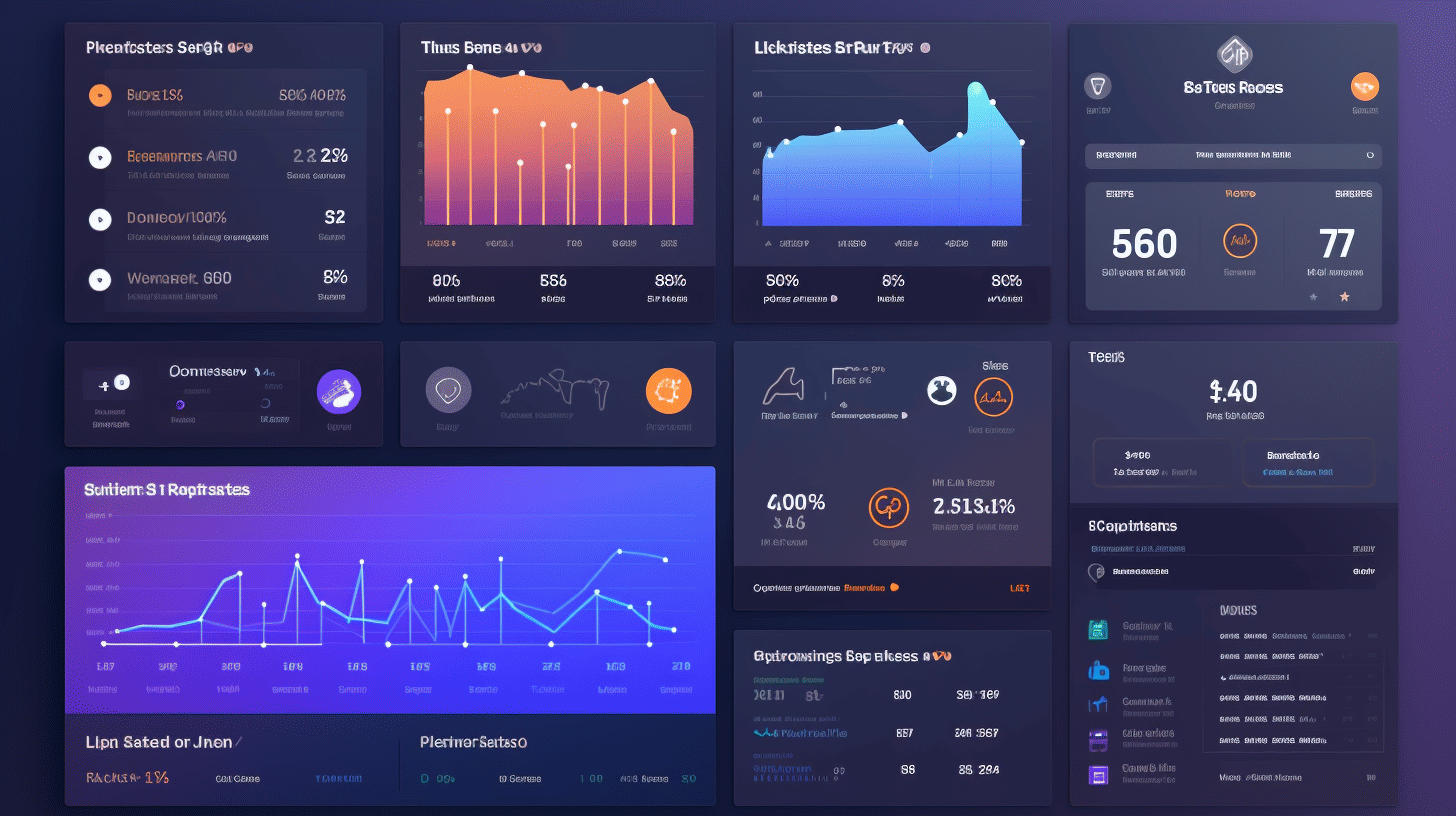在当今的数字环境中,拥有强大的在线影响力对于企业和个人都至关重要。提高知名度和吸引自然流量到您网站的最有效方法之一是通过搜索引擎优化 (SEO)。在构建网站方面,WordPress 是全球数百万用户的首选平台。
WordPress 提供了用户友好的界面和大量工具和插件,可让您轻松优化您的网站以适应搜索引擎。在本文中,我们将探讨 WordPress SEO 优化如何显著改善用户体验并为您的网站带来更多流量。
从提高网站速度到针对移动设备进行优化并创建可读内容,WordPress SEO 优化涵盖各种旨在增强用户在您网站上的体验的策略。
但在深入探讨细节之前,让我们首先了解什么是 SEO,以及为什么它对 WordPress 网站至关重要。
什么是WordPress SEO优化?
在广阔的网络世界中,无数网站都在争夺关注,出现在搜索引擎结果的顶部是获得知名度和吸引访客的关键。这就是搜索引擎优化 (SEO) 发挥作用的地方。
了解 SEO
SEO 涉及一系列策略和技术,旨在提高网站的知名度和来自 Google、Bing 和 Yahoo 等搜索引擎的自然流量。WordPress SEO 优化专门指在使用 WordPress 内容管理系统 (CMS) 构建的网站上实施这些策略。互联网上有超过 40% 个网站使用 WordPress,了解如何针对 SEO 优化 WordPress 网站可以让您在网络世界中占据显著优势。
SEO 对 WordPress 的重要性
WordPress SEO 优化至关重要,原因如下:
- 提高搜索引擎排名:通过优化您的网站以进行 SEO,您可以提高在搜索引擎结果中排名更高的可能性。这意味着当有人搜索与您的网站相关的特定关键字或短语时,他们更有可能找到并点击您的网站。
- 增加有机流量:排名越高,知名度就越高,从而吸引更多自然流量到您的 WordPress 网站,即直接来自搜索引擎结果而非付费广告的流量。自然流量很有价值,因为它往往更有针对性,更有可能转化为客户或读者。
- 增强用户体验:SEO 优化涉及改进 WordPress 网站的各个方面,例如网站速度、移动响应能力和用户友好导航。通过增强这些元素,您可以为访问者创造更好的用户体验,增加他们留在您的网站、进一步探索并在将来返回的机会。
- 更好的内容可发现性:SEO 优化涉及优化您网站的内容,包括博客文章、文章和产品页面,以确保它们易于被搜索引擎发现。这使得搜索相关信息或解决方案的用户更有可能找到您的宝贵内容。
- 长期利益:与其他一些营销策略不同,SEO 优化具有持久的效果。一旦您针对 SEO 优化了 WordPress 网站并获得更高的排名,您就可以在较长时间内继续获得收益。这意味着随着时间的推移,您将获得更多的可见性、流量和潜在转化。
因此,无论您拥有个人博客、电子商务商店还是商业网站,投入时间和精力进行 WordPress SEO 优化都是值得的。您的网站在搜索引擎结果中的排名越高,您在竞争激烈的在线环境中获得的曝光率和成功率就越高。
WordPress SEO 如何改善用户体验
在当今的数字环境中,用户体验 (UX) 对网站的成功起着至关重要的作用。对于 WordPress 网站,实施有效的 SEO 策略不仅有助于提高搜索引擎排名,还可以增强整体用户体验。通过用户友好且经过良好优化的网站,您可以保持访客的参与度,鼓励他们更长时间地访问网站,并最终推动转化。让我们探索 WordPress SEO 改善用户体验的一些方法:
网站速度⚡️
“加载缓慢的网站会让访客很失望。”
影响用户体验的关键因素之一是网站速度。用户希望网站能够快速加载,如果等待时间过长,他们很可能会放弃该页面并转到竞争对手的网站。网站速度慢不仅会让用户感到沮丧,还会对搜索引擎排名产生负面影响。
通过实施 WordPress SEO 实践(例如优化图像、启用缓存、最小化 CSS 和 JavaScript 文件以及选择可靠的托管服务提供商),您可以显著提高网站的加载速度。更快的网站可以快速提供内容并吸引访客,从而提升用户体验。
移动优化
“移动设备已经成为访问互联网的主要方式。”
在当今以移动为中心的世界,网站必须适合移动设备。移动优化不再只是一种选择;它是在所有设备上提供无缝用户体验的必需品。随着越来越多的人通过智能手机和平板电脑访问互联网,忽视移动优化可能会导致大量潜在客户流失。
WordPress 提供大量适合移动设备的主题和插件,让您能够轻松优化您的网站以适应移动设备。响应式设计、适合移动设备的导航和快速的移动设备加载时间有助于提供良好的用户体验。通过利用 WordPress SEO 技术优化您的网站以适应移动设备,您可以确保访问者无论使用哪种设备都能获得愉快的浏览体验。
可读且可访问的内容📖
“用户欣赏结构良好、信息丰富且易于访问的内容。”
您在网站上提供的内容对于吸引用户并留住他们至关重要。无论您的网站在视觉上多么吸引人,如果内容难以阅读、结构不良或难以访问,用户很可能会离开并在其他地方寻找信息。
WordPress 提供了一系列 SEO 友好型功能和插件,让您可以轻松创建结构良好、可读且易于访问的内容。通过使用适当的标题、使用项目符号或编号列表组织内容、合并相关图片和替代文本以及优化文本的可读性,您可以增强用户体验并鼓励访问者在您的网站上停留更长时间。
总之,实施有效的 WordPress SEO 策略会直接影响用户体验。通过关注网站速度、移动优化和创建可访问的内容,您可以保持访问者的参与度、提高搜索引擎排名,并最终推动业务成功。因此,如果您想创造积极的用户体验并在在线世界中获得竞争优势,请务必优先考虑 WordPress SEO。
WordPress SEO 最佳实践
在针对搜索引擎优化 WordPress 网站时,您应该遵循一些最佳实践来提高排名并增加自然流量。从进行关键字研究到优化元描述,您可以实施多种策略来最大限度地提高 SEO 效果。在本文中,我们将探讨一些最有效的 WordPress SEO 最佳实践,以及如何利用它们来提高网站在搜索引擎结果页面 (SERP) 中的可见性。
关键词研究与使用
SEO 的一个基本方面是选择正确的关键词作为内容的目标。通过进行彻底的关键词研究,您可以确定目标受众正在搜索的术语和短语,从而让您创建直接满足他们需求的内容。以下是有效进行关键词研究和使用的一些关键提示:
- 确定相关关键词: 使用 Google 关键字规划师、Ahrefs 或 SEMrush 等关键字研究工具来发现与您的业务或领域相关的高流量、低竞争的关键字。
- 关注长尾关键词: 长尾关键词是更长、更具体的短语,通常搜索量较低,但转化率较高。通过定位这些关键词,您可以吸引更多合格流量到您的网站。
- 自然地整合关键词: 确定目标关键词后,请以自然、有机的方式将其融入内容中。避免关键词堆砌,因为这会导致用户体验不佳,并可能损害您的搜索排名。
元描述和标题标签
元描述和标题标签是优化网站页面和博客文章的关键元素。它们提供内容的简明摘要,帮助搜索引擎了解您的页面内容。以下是优化元描述和标题标签的方法:
- 制作引人注目的标题: 创建描述性强、独特且引人注目的标题,准确反映您网页的内容。自然地包含您的目标关键字,但避免关键字堆砌。
- 撰写引人入胜的元描述: 制作引人注目的元描述,吸引用户点击您的搜索列表。使用以行动为导向的语言,包含相关关键字,并将描述保持在 160 个字符以内。
图像优化
图片在增强网站的视觉吸引力方面起着至关重要的作用,但它们也会影响您的 SEO 工作。通过优化图片,您可以缩短网站的加载时间并增加在图片搜索结果中排名的机会。请考虑以下图片优化技术:
- 选择正确的文件格式: 照片使用 JPEG,具有透明度的图形和图像使用 PNG。这有助于在图像质量和文件大小之间保持平衡。
- 压缩图像: 通过减小文件大小而不影响质量来优化图像。您可以使用 TinyPNG 等图像压缩工具或 ShortPixel 等插件来自动执行此过程。
- 添加替代文本: 为您的图片添加描述性替代文本,因为没有此文本,搜索引擎就无法解释它们。在适当的情况下使用相关关键字,但一定要提供准确且有意义的描述。
使用 Yoast SEO 和 Rank Math 等插件
WordPress 提供了各种插件,可帮助简化您的 SEO 工作。WordPress SEO 最受欢迎的两个插件是 Yoast SEO 和 Rank Math。这些插件提供了一套全面的功能,可针对搜索引擎优化您的网站。以下是使用这些插件的一些好处:
- 轻松的页面优化: Yoast SEO 和 Rank Math 提供直观的界面,可指导您完成针对 SEO 进行内容优化的过程。它们会提供改进元标记、关键字和整体内容结构的建议和建议。
- XML 站点地图生成: 这两个插件都会自动生成 XML 站点地图,使搜索引擎更容易抓取和索引您的网站。
- 社交媒体整合: Yoast SEO 和 Rank Math 允许您优化社交媒体共享设置,确保您的内容在 Facebook 和 Twitter 等平台上共享时看起来具有吸引力。
通过采用这些 WordPress SEO 最佳实践,您可以提高网站在搜索引擎结果中的可见性并吸引更多自然流量。请记住定期监控您的 SEO 性能并根据分析数据进行调整,以不断提高您的排名。
改善特定区域的 WordPress SEO
有时,在广阔的 WordPress SEO 世界中导航可能会让人感到不知所措。有这么多领域需要优化,要知道将精力集中在哪里可能很困难。在本文中,我们将探讨三个可以显著改善 WordPress 站点 SEO 的特定领域:导航和站点结构、核心网络要素和可读性。通过实施这些策略,您将能够很好地提高站点在搜索引擎排名中的可见性。
导航和网站结构
对于 SEO 来说,结构良好且直观的网站导航至关重要。它不仅可以提供无缝的用户体验,还可以使搜索引擎更有效地抓取和索引您的网站。以下是优化网站导航和结构的一些技巧:
- 简洁明了的菜单: 确保主菜单易于理解和浏览。为菜单项使用清晰简洁的标签,避免使用专业术语或复杂术语。让访客轻松找到所需信息。
- 逻辑层次: 将您的网站内容组织成逻辑类别和子类别。这种层次结构不仅可以帮助用户找到所需内容,还可以为搜索引擎提供您网站的清晰结构。
- 内部链接: 内部链接在改善您网站的 SEO 方面起着至关重要的作用。它们可以帮助搜索引擎更有效地发现和浏览您的内容。此外,内部链接可以帮助在整个网站上分配权限和相关性。务必为这些内部链接添加相关且描述性的锚文本。
通过优化网站的导航和结构,您可以创建用户友好的体验,同时帮助搜索引擎更好地理解您的内容。
改善核心网络生命力
自 2021 年 5 月起,Google 已开始将核心网络生命力指标纳入排名因素。核心网络生命力指标衡量以用户为中心的性能指标,重点关注页面加载速度、交互性和视觉稳定性。以下是一些可以增强 WordPress 网站核心网络生命力指标的方法:
- 优化页面加载速度: 用户希望网站加载速度快。压缩图片、利用浏览器缓存并缩小 CSS 和 JavaScript 文件以提高页面加载速度。
- 减少首次输入延迟: 首次输入延迟 (FID) 衡量用户首次与您的网站互动所需的时间。尽量减少阻止 JavaScript 并优化代码以减少 FID。
- 消除累积布局偏移: 累积布局偏移 (CLS) 是指网页上的元素意外偏移,从而导致用户体验不佳。请避免动态插入内容或未预留足够空间和适当调整图像大小以防止布局偏移。
通过优先考虑核心网络生命力,您不仅可以改善网站的 SEO,还可以增强整体用户体验,从而提高参与度和转化率。
增强可读性
可读的内容不仅对用户友好,而且对搜索引擎也友好。以下是增强 WordPress 网站可读性时需要考虑的一些关键要素:
- 使用标题和副标题: 使用标题和副标题划分内容以提高可读性,让用户更轻松地浏览您的页面。使用适当的标题标签(H1、H2 等)来指示内容的层次结构。
- 简洁地写: 使用简洁明了的语言传达您的信息。将复杂的信息分解为易于理解的部分,并使用简短的段落来提高可读性。
- 包括相关关键词: 虽然在内容中包含相关关键词至关重要,但请记住要自然地添加关键词,并以一种增强可读性的方式添加。过度使用关键词会损害用户体验和您的 SEO 工作。
通过实施这些可读性策略,您将创建内容丰富且阅读起来令人愉悦的内容。这不仅可以吸引用户的注意力,还可以向搜索引擎发出信号,表明您的网站提供了有价值且权威的信息。
针对这些特定领域优化您的 WordPress 网站无疑会对您的 SEO 工作产生积极影响。通过关注导航和网站结构、改进核心网络要素并增强可读性,您将创建一个用户友好且搜索引擎友好的网站,在竞争激烈的在线环境中脱颖而出。
通过 WordPress SEO 优化提高排名
🔍 您是否希望提高网站在搜索引擎上的可见度?WordPress SEO 优化就是您的最佳选择。WordPress 拥有用户友好的界面和强大的功能,是提高网站搜索引擎排名的完美平台。在本文中,我们将探讨一些关键策略和技巧,帮助您在搜索结果中获得更高的排名。
为什么 SEO 优化对 WordPress 网站很重要
✅ 超过 4.55 亿个网站由 WordPress 提供支持,使其成为最受欢迎的内容管理系统之一。在如此激烈的竞争中,优化您的 WordPress 网站以适应搜索引擎至关重要。原因如下:
- 增加有机流量: 搜索结果排名越高,意味着越多的人可能会点击您的网站,从而增加自然流量。这可以带来更多的转化和销售。
- 改善用户体验: SEO 优化涉及提高网站的加载速度、移动响应能力和整体用户体验。优化良好的网站可确保访问者获得积极的体验,从而提高参与度并延长访问时间。
- 信誉与信任: 出现在搜索结果的第一页可以建立与受众的可信度和信任度。用户更有可能信任在搜索引擎中排名较高的网站。
- 长期利益: SEO 优化是一个持续的过程,可以产生长期效果。投入时间和精力优化您的 WordPress 网站可以带来持续的自然流量和更高的排名。
WordPress SEO优化的关键策略
现在您了解了 SEO 优化为何对您的 WordPress 网站至关重要,让我们来探索一些帮助您提高排名的关键策略。以下是一些入门技巧:
- 关键词研究: 进行彻底的关键字研究,以确定目标受众使用的搜索词。使用 Google 关键字规划师或 SEMrush 等工具查找搜索量高、竞争低的相关关键字。
- 优化内容: 创建自然融入目标关键词的高质量内容。确保您的内容有价值、信息丰富且引人入胜,从而让访客在您的网站上停留更长时间。
- 元标签和描述: 自定义 WordPress 网站上每个页面和帖子的元标记和描述。这些元素提供了内容的简明摘要,优化它们可以提高点击率。
- 移动优化: 随着移动设备的使用日益增多,针对移动用户优化您的 WordPress 网站至关重要。确保您的网站响应迅速且适合移动设备,以提供无缝的浏览体验。
- 网站速度: 加载时间过长会对用户体验和搜索引擎排名产生不利影响。使用缓存插件、减小图像大小和优化代码来优化 WordPress 网站的速度。
立即开始使用 WordPress SEO 优化!
🚀 通过 WordPress SEO 优化,您可以提高网站的知名度、吸引更多自然流量并提升搜索引擎排名。通过实施关键策略(例如进行关键字研究、创建优化内容以及提高网站速度和移动响应能力),您将在搜索结果中排名更高。立即开始优化您的 WordPress 网站,让您的在线形象飙升!
结论
总之,实施 WordPress SEO 优化是改善网站用户体验的关键步骤。通过针对搜索引擎优化您的网站,您不仅可以增加在搜索结果中排名更高的机会,还可以增强访问者的整体体验。
通过关注网站速度、移动优化以及创建可读且易于访问的内容,您可以创造无缝的用户体验,让访问者保持参与度并鼓励他们在您的网站上停留更长时间。此外,遵循最佳做法(例如进行关键字研究、优化元描述以及使用 Yoast SEO 和 Rank Math 等插件)可以进一步提高您网站的知名度和有效性。
请记住,优化良好的网站更有可能吸引自然流量、产生潜在客户并最终提高转化率。在构建和维护 WordPress 网站时,不要忽视 SEO 的重要性。
如果您正在寻找一款可以简化您的基础设施并提供专家支持的优质托管 WordPress 云托管平台,请考虑 Managed-WP™。借助 Managed-WP,您可以专注于创建精彩的内容,并将托管的技术方面留给专家。详细了解 Managed-WP 如何增强您的 WordPress 体验,请访问 managed-wp.com.
拥抱 WordPress SEO 优化的强大功能,将您的用户体验提升到新的高度。立即开始实施这些策略,并观察您的网站在可见性、流量和参与度方面的增长。您的用户会感谢您,搜索引擎也会奖励您。
常见问题
- 什么是WordPress SEO优化?
WordPress SEO 优化是指通过优化内容、提高网站速度、增强移动响应能力和实施 SEO 最佳实践等各种技术来改善 WordPress 网站的搜索引擎可见性、性能和用户体验的过程。
- 为什么用户体验对SEO优化很重要?
用户体验在 SEO 优化中起着至关重要的作用,因为搜索引擎会优先考虑提供积极且引人入胜的用户体验的网站。通过改善用户体验(例如具有响应式设计、快速的页面加载时间和轻松的导航),您可以增加在搜索引擎结果中排名更高的机会。
- 如何优化我的 WordPress 网站以获得更好的用户体验?
为了优化您的 WordPress 网站以获得更好的用户体验,您可以首先使用适合移动设备的主题,优化图像和多媒体文件以加快加载速度,通过缓存和缩小来提高网站速度,确保通过清晰的菜单和面包屑轻松导航,并为用户提供有价值且相关的内容。
- 有没有专门针对WordPress SEO优化的插件?
是的,有几种插件可用于 WordPress SEO 优化,例如 Yoast SEO、Rank Math、All in One SEO Pack、用于缓存的 WP Rocket、用于图像优化的 WP Smush 和用于性能改进的 WP Super Cache。这些插件可以帮助您实施各种优化技术。
- 单靠SEO优化就能提高用户体验吗?
虽然 SEO 优化有助于改善用户体验,但它并不是唯一因素。用户体验涵盖设计、可用性、可访问性和内容质量等多个方面。SEO 优化与这些元素相结合,可以创造全面而增强的用户体验。



















